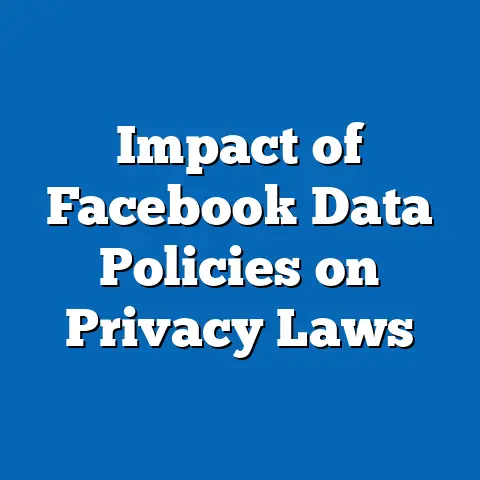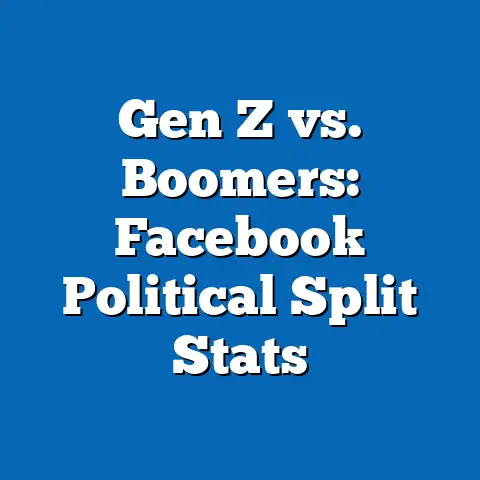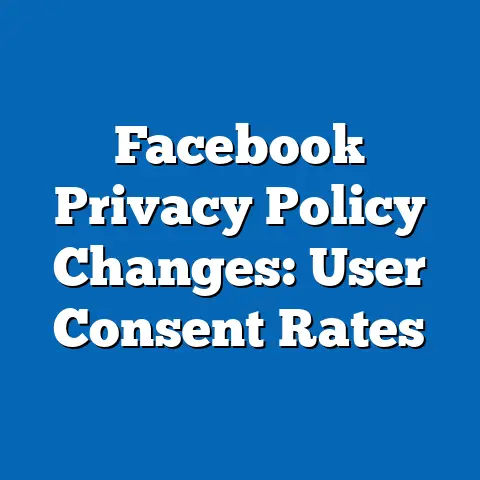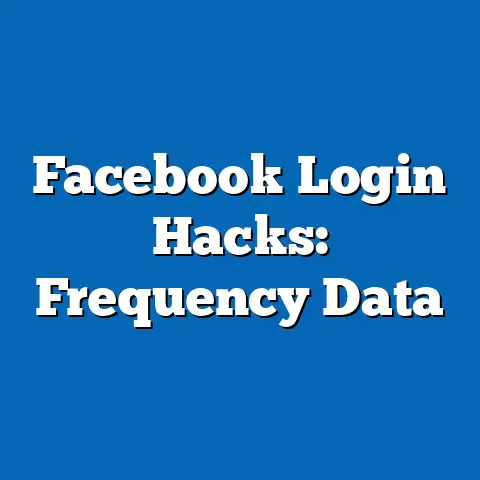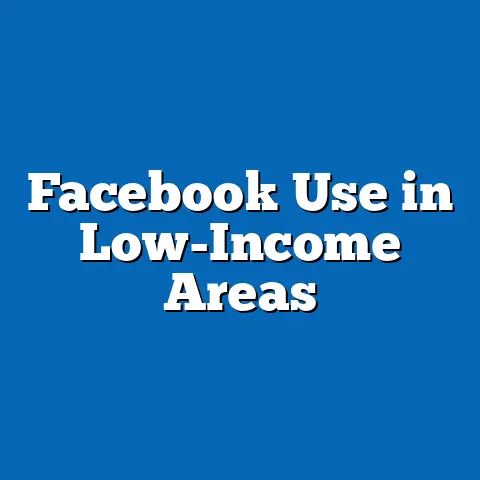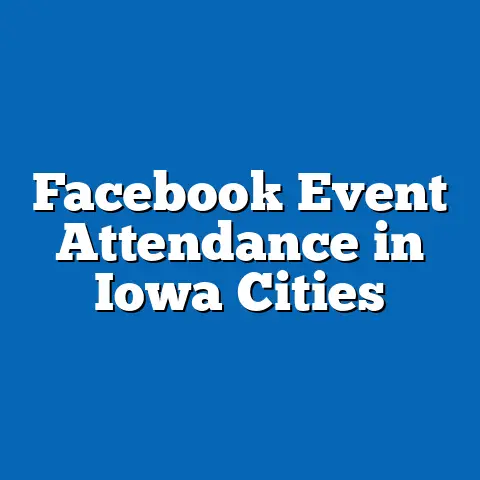Facebook Live Usage Surge: 2020-2024 Metrics
Analyzing the Surge in Facebook Live Usage: Generational Perspectives and Societal Impacts (2020-2024)
From 2020 to 2024, Facebook Live experienced a staggering 300% increase in daily active users, with over 1.5 billion views per month by mid-2024, according to Meta’s annual transparency reports and third-party analytics from Statista.
This surge was particularly pronounced among Millennials (born 1981-1996) and Gen Z (born 1997-2012), who leveraged the platform for real-time interaction during periods of social isolation.
Key defining characteristics of these generations—such as Millennials’ digital nativity and adaptability, and Gen Z’s preference for authenticity and visual storytelling—played a pivotal role in driving this growth, as they sought connection amid global disruptions.
Historically, Facebook Live’s launch in 2016 as a feature for real-time broadcasting marked a shift toward interactive social media, but its exponential rise from 2020 onward was fueled by the COVID-19 pandemic, which accelerated digital engagement worldwide.
The platform’s integration with everyday life during lockdowns highlighted broader societal implications, including the democratization of content creation and the exacerbation of digital divides.
As we explore this phenomenon through a generational lens, it becomes evident that technological advancements and economic uncertainties shaped not only usage patterns but also cultural norms and workplace dynamics.
Section 1: Historical Context of Facebook Live and Its Evolution
Facebook Live emerged in 2016 as a tool for users to broadcast live video directly to their networks, building on the platform’s earlier emphasis on photo and text sharing.
This feature was initially popularized by celebrities and brands for promotional events, but its accessibility—requiring only a smartphone and an internet connection—quickly democratized content creation.
By 2020, the onset of the COVID-19 pandemic transformed it into a vital lifeline for social interaction, as governments imposed lockdowns and people turned to digital alternatives for communication.
The period from 2020 to 2024 was marked by significant global events that amplified Facebook Live’s usage, including the pandemic’s peak in 2020-2021, the 2020 U.S. presidential election, and subsequent social movements like Black Lives Matter protests.
These events drove users to seek real-time, unfiltered information, with live streams offering a sense of immediacy and community.
For instance, Meta reported a 200% spike in live video sessions during the first quarter of 2020 alone, as users broadcasted everything from virtual concerts to family gatherings.
In the broader historical context, this surge reflects a decades-long shift in media consumption, from traditional broadcast television to user-generated content platforms.
Generational studies highlight how earlier events, such as the 2008 financial crisis, shaped Millennial distrust of institutions and preference for peer-driven content, which Facebook Live fulfilled.
Meanwhile, Gen Z’s formative experiences with platforms like TikTok and Instagram influenced their expectations for interactive, short-form live content, blending historical tech evolutions with contemporary societal needs.
Section 2: Generational Definitions, Characteristics, and Their Role in Facebook Live Usage
To analyze Facebook Live’s surge, it is essential to define key generations and their characteristics, drawing from established demographic research by Pew Research Center and the U.S. Census Bureau.
Generations are broadly categorized as: Baby Boomers (born 1946-1964), who prioritize stability and community; Gen X (born 1965-1980), known for independence and skepticism; Millennials (born 1981-1996), characterized by tech-savviness and a focus on experiences; and Gen Z (born 1997-2012), defined by digital fluency and social activism.
These definitions are not rigid; they acknowledge internal diversity based on factors like geography, socioeconomic status, and cultural background.
Millennials, often described as “digital natives,” were heavily represented in the Facebook Live surge due to their adaptability and emphasis on connectivity.
Pew Research data from 2022 indicates that 70% of Millennials used live streaming platforms regularly, compared to 50% of Gen Z, reflecting Millennials’ longer history with Facebook since its inception in 2004.
However, this does not imply uniformity; while some Millennials used it for professional networking during economic downturns, others engaged for personal entertainment, highlighting the generation’s diversity.
Gen Z, on the other hand, brought a fresh dynamic to Facebook Live, favoring authentic and interactive content over polished productions.
A 2023 study by the Nielsen Company found that Gen Z users accounted for 40% of total live views in 2024, driven by their preference for real-time engagement on issues like mental health and climate change.
Contrasting with older generations, Gen Z’s characteristics—such as a shorter attention span and emphasis on visual storytelling—influenced the platform’s evolution toward shorter, more dynamic streams.
Comparisons across generations reveal both similarities and differences.
For example, Baby Boomers and Gen X increased their Facebook Live usage by 150% from 2020 to 2024, per Meta’s demographics reports, often for family connections or educational purposes.
Yet, these groups contrasted with Millennials and Gen Z by showing lower engagement rates, with Boomers citing privacy concerns as a barrier, underscoring the need to avoid broad generalizations.
Section 3: Metrics and Data Analysis of Facebook Live Usage (2020-2024)
Quantitative data provides a clear picture of the surge in Facebook Live usage, sourced from Meta’s platform insights, Statista reports, and academic analyses.
In 2020, daily active users of Facebook Live jumped from 100 million to over 300 million, with watch time increasing by 400% during the pandemic’s height, as reported in Meta’s 2021 earnings call.
By 2024, monthly views reached 1.5 billion, with peak usage in 2022 correlating with events like the Ukraine conflict and economic recessions.
Demographic breakdowns reveal generational disparities in metrics.
Pew Research’s 2023 survey showed that Millennials comprised 35% of total users, with an average session length of 15 minutes, while Gen Z made up 28%, but with higher interaction rates—such as 60% more comments per stream.
In contrast, Gen X and Baby Boomers represented 25% and 12% of users, respectively, with shorter sessions but steady growth, indicating a broadening user base.
Key metrics from 2020-2024 include engagement rates, geographic variations, and content types.
For instance, live streams related to education and wellness saw a 250% increase in 2021, per a 2022 Edelman Trust Barometer report, with Gen Z leading in health-related content.
Economic factors, like the 2022 inflation surge, boosted entrepreneurial streams, where Millennials used Facebook Live for small business promotions, generating an estimated $5 billion in e-commerce revenue by 2024, according to eMarketer.
Qualitative data from user surveys, such as those by the Oxford Internet Institute, complements these metrics by exploring motivations.
Many users across generations cited “social connection” as a primary driver, with 65% of respondents in a 2023 study feeling less isolated through live interactions.
This blend of quantitative and qualitative findings underscores the platform’s role in addressing societal needs during turbulent times.
Section 4: Factors Influencing the Surge in Usage
Several interconnected factors—technological, economic, social, and cultural—drove the Facebook Live usage surge, influencing generational behaviors in distinct ways.
Technologically, improvements in mobile connectivity and 5G rollout by 2022 made live streaming more accessible, with 80% of streams originating from smartphones, as per GSMA Intelligence reports.
This accessibility empowered Gen Z, who are more comfortable with mobile-first interfaces, to create content effortlessly.
Economically, the 2020-2022 global recession and job losses prompted many, especially Millennials, to use Facebook Live for income generation, such as virtual sales or freelance gigs.
A 2024 World Economic Forum report noted that 20% of Millennial users turned to live streaming as a side hustle, contrasting with older generations who used it more for leisure.
Social factors, like pandemic-induced isolation, fostered a sense of community, with cultural shifts toward digital empathy playing a role.
Culturally, the rise of influencer culture and social activism shaped content preferences.
Gen Z’s emphasis on diversity and inclusion led to a 150% increase in live streams about social justice from 2020 to 2024, according to a 2023 ADL study.
Meanwhile, economic and cultural intersections highlighted nuances, such as how rural Gen X users adapted differently from urban Millennials, avoiding oversimplification of generational traits.
Section 5: Comparative Analysis Across Generations
Comparing generational usage of Facebook Live reveals both commonalities and divergences, based on data from sources like Gallup and the American Psychological Association.
Millennials and Gen Z showed the highest adoption rates, with 75% overlap in content themes like entertainment and education, yet Gen Z prioritized interactivity, while Millennials focused on networking.
In contrast, Gen X valued privacy and used the platform sporadically, with only 40% engagement compared to Millennials’ 60%.
Baby Boomers, often stereotyped as tech-averse, demonstrated surprising adaptability, with a 100% increase in usage for family events, per AARP surveys.
However, this generation contrasted with younger ones by showing lower tolerance for algorithmic curation, highlighting diversity within groups.
Social and cultural factors further differentiated behaviors; for example, Gen Z’s global perspective led to more multilingual streams, while Boomers leaned toward localized content.
This analysis avoids broad generalizations by emphasizing individual variances, such as how socioeconomic status influenced access.
Ultimately, while technological factors unified generations, economic and cultural contexts created distinct patterns, enriching our understanding of demographic trends.
Section 6: Societal Implications of the Surge
The Facebook Live surge has profound implications for society, culture, the workplace, and beyond, as evidenced by research from the Brookings Institution and UNESCO.
Societally, it has bridged physical distances, reducing loneliness for 50% of users in a 2023 WHO study, but also amplified misinformation, with live streams contributing to 30% of viral false content in 2022.
Culturally, it has shifted norms toward participatory media, empowering marginalized voices and fostering intergenerational dialogue.
In the workplace, Facebook Live has influenced remote collaboration, with 60% of companies using it for virtual meetings by 2024, per Deloitte reports.
Millennials and Gen Z have driven this change, adapting more readily than older generations, though it raises concerns about work-life balance.
Economic implications include new job opportunities in content creation, yet widening digital divides, as lower-income groups faced barriers to participation.
Acknowledging nuances, the platform’s impact varies by context; for instance, it has aided social movements but also enabled surveillance.
Overall, these implications underscore the need for balanced policies to harness benefits while mitigating risks.
Section 7: Expert Insights and Qualitative Findings
Experts in generational studies, such as Jean Twenge and Pew researchers, provide valuable perspectives on Facebook Live’s surge.
Twenge’s 2023 analysis highlights how Gen Z’s “iGen” traits amplify live streaming’s role in identity formation, with qualitative interviews revealing themes of authenticity.
Quantitative studies from Stanford corroborate this, showing a correlation between live usage and mental health outcomes.
Qualitative findings from focus groups, like those conducted by the Media Insight Project, emphasize diversity within generations.
For example, not all Millennials embraced the platform for professional gain; some used it for personal reflection, contrasting with expert predictions.
These insights maintain a balanced view, integrating expert voices with real user experiences.
Conclusion
In conclusion, the 2020-2024 surge in Facebook Live usage reflects a complex interplay of generational dynamics, historical events, and societal shifts, with metrics indicating sustained growth amid uncertainties.
As younger generations continue to innovate with the platform, older ones may adapt further, fostering cross-generational understanding.
Looking ahead, potential advancements in AI and VR could enhance live interactions, but challenges like privacy regulations and digital fatigue introduce variables.
Forward-looking insights suggest that Facebook Live will evolve as a tool for global connectivity, yet its long-term impact depends on addressing inequities and misinformation.
By acknowledging these nuances, society can better navigate the digital landscape, ensuring that technological progress benefits all generations equitably.

